Jyeshtha Shuddha Dashami, Kaliyug Varsha 5112
By Subhadeep Kumar
To those people who take pains to show that Hinduism is a remote blind faith practiced in only one impoverished part of the globe, the case of Malaysia would stand as a stark reminder to their falsehood and the danger of such propagations. Hinduism flourished in Malyasia in the first millennium of the Christian era. This was part of the original greater India, Hindu kings and officials ruled these parts for centuries. But alas, the coming of Islam dealt a hard blow to organized Hinduism as it had done in other parts of the subcontinent. However, the innate resilience of the faith that had sustained it through centuries of Islamic and later Christian persecution in Bharatvarsh, present Tibet, today’s Indonesia or Cambodia also enabled Malaysia to wear of the dark age and stand up for better times to come.
It came through a peculiar colonial twist of faith. The British masters of the land in late nineteenth century needed huge numbers of cheap labour for their rubber and timber plantations. As elsewhere in Carribean or Mauritius whenever there had been a dearth of cheap labour in the empire, the British had pinned on India. Thus from the last decades of the 19th century huge numbers of Indians started to emigrate to Malaysia and within four decades they constituted 14% of the population of the Malaya peninsula. Hinduism again started to flourish, 85% of these Indian entrants were Hindus. They soon spread themselves in the various sectors of the Malaya economy – from plantation labour to trade and the professions, especially law and medicine.
By independence, in 1957, the Indians numbered a whopping 1 million, the largest Indian presence outside the boundaries of the republic of India, controlling a substantial asset base of the economy.
However as it seems that jealousy is inherent within the Islamic faith, the ruling clique bent upon to stunt the prosperity of the Indian segment of the population. They instituted novel constitutionally sanctioned techniques to achieve this. Article 153 of the federal constitution made it the responsibilty of the parliament to guarantee the position of the Malay population by affirmative action. Article 160 defined Malay as ‘someone who professes the religion of Islam, habitually speaks the Malay language, conforms to Malay custom and is the child of at least one parent who was born within the Federation of Malaysia before the Independence of Malaya. Thus with the professed aim of providing social and economic equality to the Malays they sought to rob the Indians of their hard earned economic sustainability. Now, the aforementioned art. 160 enabled the Muslim segment of the Indian population to reclassify themselves as Malaysians and make them eligible for all the benefits reserved for the indigenous Malay. From now on the Indian and the Hindu became synonymous and the previously Indian Muslims turned on the Hindus as if to prove that they are more Malay than the Malays (so much for inter-religious national fraternity). For instance, In 1978 KIMMA, the principal pressure group of the erstwhile Indian Muslims distributed pamphlets accusing MIC (Malaysian Indian Congress, the main political party of the Indians in Malaysia) of being anti – Muslim and many Hindu temples were attacked with tacit government support. The reports can be collected from even the mainstream Malaysian newspapers of the time.
With that, there had been a systematic attempt by successive governments to reduce the space of Indians in the public life of the country. In 1980s government scholarships available to Indian graduate students was less than 5% compared to 85% for Malay students. For overseas education it was 0.6%. In the New Development Plan (NDP) promulgated in 1991 for out of 5 seats in Malayan Civil Service was reserved for bumiputeras (the legal term for the Malay, note the language; bumi – soil, putera – son!) which in diplomatic service was three out of four. Most indians doesn’t finish middle school. Today there had been a decrease in terms of percentage of the Indian segment vis a vis the national population since independence. The figures are striking – 9% of the population controlling 1% of the corporate wealth of the country. Representation of Indians in civil services, police and the military is miniscule, and since the last decade of the 20th century Indian temples are being repeatedly attacked, burnt, desecrated and the families of the priests molested. All of us know of the Petronas Twin towers of Malaysia, the symbol of new Malaysia but how many of us know that it had been built on the site of a century old Tamil temple, which had been bulldozed?
In the New Development Plan, redistribution according to Islamic principle had been acknowledged to be a professed aim of the government, so much for their secularism! The successive governments had taken pains to prove their Islamic credential. In the 1970s it was the Dakwa movement a form of state fostered Islamic hooliganism sponsored by global Islamic petrodollar networks. Now in the first decade of the twenty first century it is Islam Hadhari. First promulgated by the Barisan Nasional party, at the time of 2004 general elections, since then it has become a guiding principle of the state. Badawi, the then president had tried to clarify that Islam Hadhari is a holistic development strategy and not an Islamic proselytyzation agenda. However despite such multiracial claims it is based on ‘faith and piety of the Allah’. Now the decision of sharia courts cannot be overruled even by the federal court and all policewomen are required to wear tudung, their traditional headgear and intermittently official instructions are passed not to greet hindus on Deepavali.
In this environment of growing polarization the common ordinary Hindu is left with few options but to convert to Islam or join the drug and mafia network. But still the innate self-respect of the god-fearing Hindu man or woman that none of these had considered to be popular options. Indeed a large number of petty criminals and in custody accused are Indians but stll it is a negligible portion of the population and we should also take such statistics with a pinch of salt, considering the bleak record of Malay police regarding racial relations.
The larger majority of Hindus had taken to the streets. They had shifted their long held allegiance from the now impotent Malaysian Indian Congress (MIC), known for their continuous bowing down to ruling coalition pressure and their leaders’ love for high official portfolios. In 2007, 30 NGOs mainly working for Hindu rights came forward to form the Hindu Rights Action Force (hindraf). Most Hindus now support the Hindraf for its uncompromising stance and staunch regard for Hindu rights, though they also have some leaders with quite questionable reputation, still in a murky political playing field they are the only hope for the Indians.
The Indian government as always takes care to stay away from such issues involving the plight of overseas Hindus, whether be it in Fiji, Guyana or Malaysia. Countless Non Governmental delegation from the Hindu population of Malaysia had approached the Indian government in the past which the successive governments had taken due care to show as irrelevant. Most of the times they had been denied audiences in direct violation of international protocol.
Still with complete alienation they had not given up their fight, draconian prison sentences, state sponsored hooliganism, nothing could subdue them in their struggle for their honour. We must remember during the 1940s they had helped the approaching Azad Hind Fauz against all wartime difficulties of their own, they are inherently nationalists, they are the true but forsaken mother India’s children abroad.
References for Article used by the Author
1. Arasaratnam, S (1980) “Indian Society of Malaysia and its Leaders: Trends in Leadership and Ideology among Malaysian Indians, 1945-1960.”
2. Hirschman, Charles (1987) “The Meaning and Measurement of Ethnicity in Malaysia: An Analysis of Census Classifications”
3. Lee, Raymond (1988) “Patterns of Religious Tension in Malaysia”
4. Lee and Rajoo (1987) “Sanskritization and Indian Ethnicity in Malaysia”
5. www.makkal.org – the website of HINDRAF.
6. Marsot (1992) “Political Islam in Asia: A Case Study”
7. Milne, R.S. (1988) “Bicommunal Systems: Guyana, Malaysia, Fiji”
8. Nagata, Judith (1973) “What is A Malay? Situational Selection of Ethnic Identity in A Plural Society”
9. Ramamurthy T.G. (1989) “Ethnic Indians in Malaysia”
10. www.mic.org.my – the website of Malysian Indian Congress
Also See
 |
Hang terrorist Mohd AfzalMohammad Afzal.is a Kashmiri terrorist who attacked parliament in 2000. Supreme court has given death sentence but congress is protecting this anti-Indian. |
 |
Hindu Genocide in Kashmir & Bangladesh
Online photo exhibition of Hindu genocide and temples destruction in Kashmir by local Muslims. Series of exhibitions being arranged. |

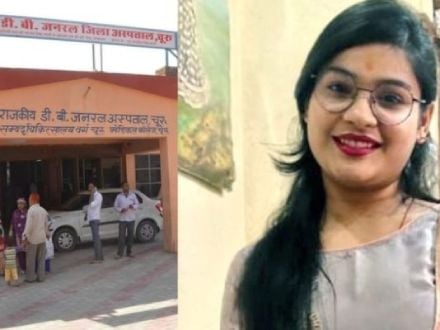 Rajasthan: Woman found hanging at a beauty parlour, Arshad, 3 others booked
Rajasthan: Woman found hanging at a beauty parlour, Arshad, 3 others booked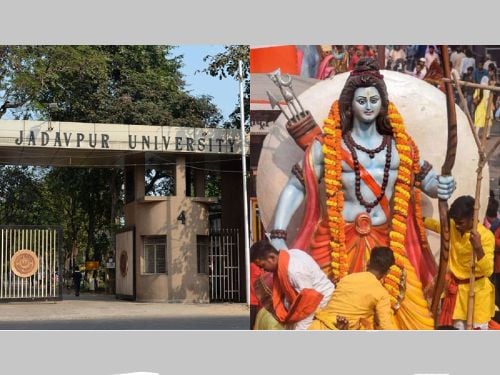 Jadavpur Univ revokes permission to celebrate Ram Navami on campus after granting it
Jadavpur Univ revokes permission to celebrate Ram Navami on campus after granting it Andhra Pradesh: Farooq kills mentally challenged Hindu man for insurance money
Andhra Pradesh: Farooq kills mentally challenged Hindu man for insurance money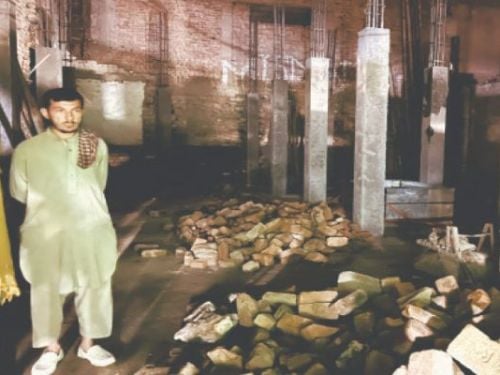 Pakistan: Ancient Hindu temple in Khyber Pakhtunkhwa demolished for commercial complex
Pakistan: Ancient Hindu temple in Khyber Pakhtunkhwa demolished for commercial complex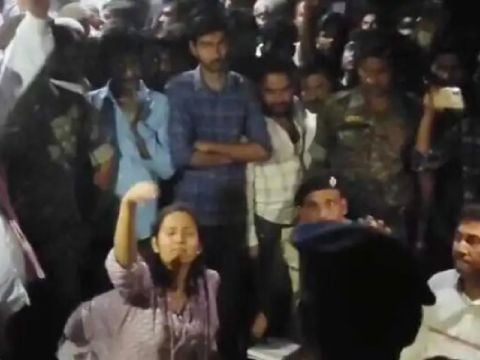 Bihar: Goddess Bhagavati Temple in Araria vandalised and deities damaged
Bihar: Goddess Bhagavati Temple in Araria vandalised and deities damaged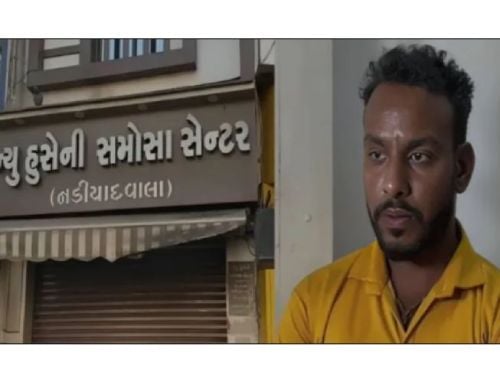 Vadodara: Beef supplier Imran Qureshi arrested in beef-stuffed samosa case
Vadodara: Beef supplier Imran Qureshi arrested in beef-stuffed samosa case